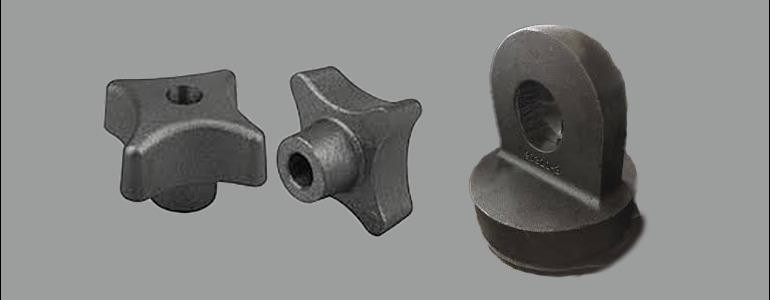Rod ends, also known as Heim joints or rose joints, are essential components in various mechanical systems, providing articulation and movement in a wide range of applications. From automotive suspension systems to aerospace engineering, Rod End plays a crucial role in enabling smooth and precise motion.
In this comprehensive guide, we'll delve into everything you need to know about rod ends, including their functions, types, selection criteria, installation techniques, maintenance tips, and common applications.
Introduction to Rod Ends
Rod ends are mechanical bearings that consist of a spherical plain bearing (or ball joint) mounted in a housing with a threaded shaft. This design allows for angular misalignment and axial movement, making rod ends ideal for applications where oscillating or rotating motion is required. Rod ends come in various configurations, including male and female threads, with options for lubrication fittings, seals, and different materials for the bearing and housing.
Functions of Rod Ends
Rod ends serve several key functions in mechanical systems:
- Transmitting Motion: Rod ends allow for the transmission of motion between two components while accommodating angular misalignment and axial movement.
- Absorbing Shock and Vibration: Rod ends absorb shocks and vibrations generated during operation, reducing stress on connected components and enhancing overall system durability.
- Providing Articulation: Rod ends provide articulation and flexibility, enabling components to move smoothly and adapt to changing conditions.
- Supporting Loads: Rod ends support loads in various directions, including radial, axial, and combination loads, depending on the application requirements.
Types of Rod Ends
There are several types of rod ends available, each designed for specific applications:
- Male Rod Ends: Male rod ends feature an externally threaded shaft that screws into a mating component, such as a linkage or control arm.
- Female Rod Ends: Female rod ends have an internally threaded bore that accepts a threaded shaft or bolt, allowing for mounting to a fixed surface or structure.
- Heavy-Duty Rod Ends: Heavy-duty rod ends are designed to withstand higher loads and more demanding operating conditions, typically featuring larger bearings and stronger materials.
- Self-Lubricating Rod Ends: Self-lubricating rod ends incorporate lubrication grooves or reservoirs within the bearing to reduce friction and minimize maintenance requirements.
- High Misalignment Rod Ends: High misalignment rod ends feature a design that allows for greater angular misalignment, making them suitable for applications with significant shaft deflection or misalignment.
- Precision Rod Ends: Precision rod ends are engineered to provide precise motion control and low friction, making them ideal for applications where accuracy and repeatability are critical.
Selection Criteria for Rod Ends
When selecting rod ends for a specific application, several factors must be considered:
- Load Capacity: Determine the maximum static and dynamic loads that the rod end will experience during operation, considering both radial and axial loads.
- Misalignment Capability: Evaluate the required degree of angular misalignment and axial movement that the rod end must accommodate to ensure proper function.
- Environmental Conditions: Consider the operating environment, including temperature extremes, moisture, chemicals, and exposure to contaminants, to select rod ends with suitable materials and coatings.
- Mounting Configuration: Determine whether a male or female rod end is required based on the mounting arrangement and accessibility of the application.
- Lubrication Requirements: Assess the lubrication requirements of the application and choose between self-lubricating rod ends or those requiring periodic maintenance and lubrication.
- Budget Constraints: Consider budgetary constraints and weigh the cost-effectiveness of different rod end options while ensuring that performance and reliability requirements are met.
Installation and Maintenance of Rod Ends
Proper installation and maintenance are essential for maximizing the performance and longevity of rod ends:
- Installation: Follow manufacturer guidelines for proper installation, including torque specifications for tightening threaded connections and ensuring adequate clearance for articulation.
- Lubrication: Lubricate rod ends regularly according to manufacturer recommendations to reduce friction, prevent wear, and extend bearing life. Use compatible lubricants and avoid over-lubrication, which can attract contaminants and lead to premature failure.
- Inspection: Regularly inspect rod ends for signs of wear, corrosion, or damage, such as excessive play, noise, or visible deformation. Replace worn or damaged rod ends promptly to prevent further damage to the system.
- Maintenance: Perform routine maintenance tasks, such as cleaning, lubricating, and adjusting rod ends, as part of a preventive maintenance program to ensure optimal performance and reliability over time.
Common Applications of Rod Ends
Rod ends are used in a wide range of industries and applications, including:
- Automotive: Suspension systems, steering linkages, control arms, and throttle linkages.
- Aerospace: Flight controls, landing gear, engine mounts, and actuation systems.
- Industrial Machinery: Robotics, material handling equipment, conveyors, and industrial automation.
- Marine: Rudder linkages, sailboat rigging, steering systems, and marine propulsion.
- Off-Road Vehicles: ATV suspensions, off-road racing vehicles, rock crawlers, and dune buggies.
- Recreational Vehicles: Motorcycle suspensions, go-karts, snowmobiles, and recreational vehicles.
In conclusion, rod ends are versatile and essential components in various mechanical systems, providing articulation, motion transmission, and load support in a wide range of applications. By understanding the functions, types, selection criteria, installation techniques, maintenance tips, and common applications of rod ends, engineers and designers can specify the right components for their projects and ensure optimal performance and reliability. Whether used in automotive, aerospace, industrial, marine, off-road, or recreational applications, rod ends play a critical role in enabling smooth and precise motion, enhancing the functionality and performance of mechanical systems across diverse industries.
At INDGIRKA, we are Rod End Bearing Manufacturers in India who carry high-precision rod ends made of premium-quality materials, including male, female, right-hand, and stainless steel rod ends.

